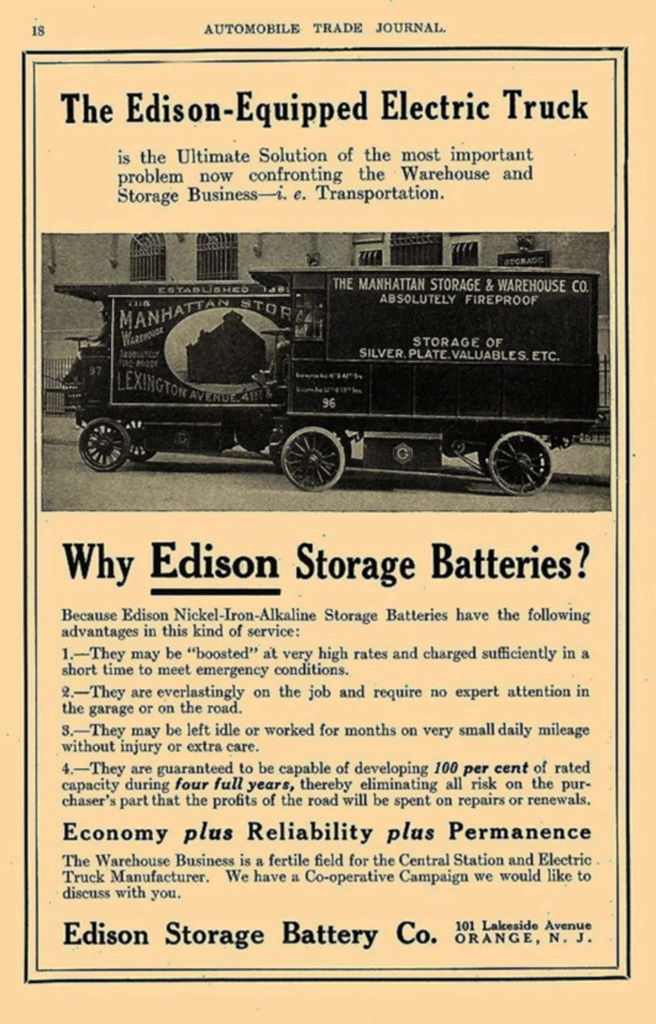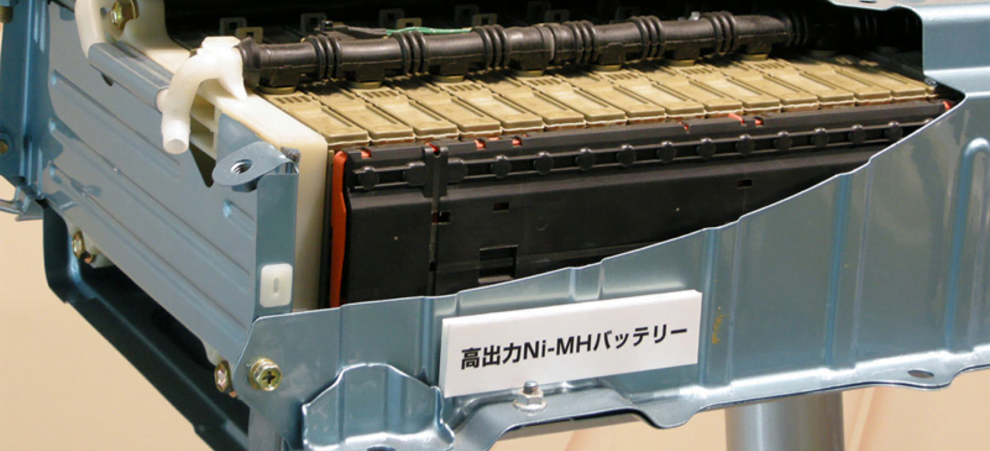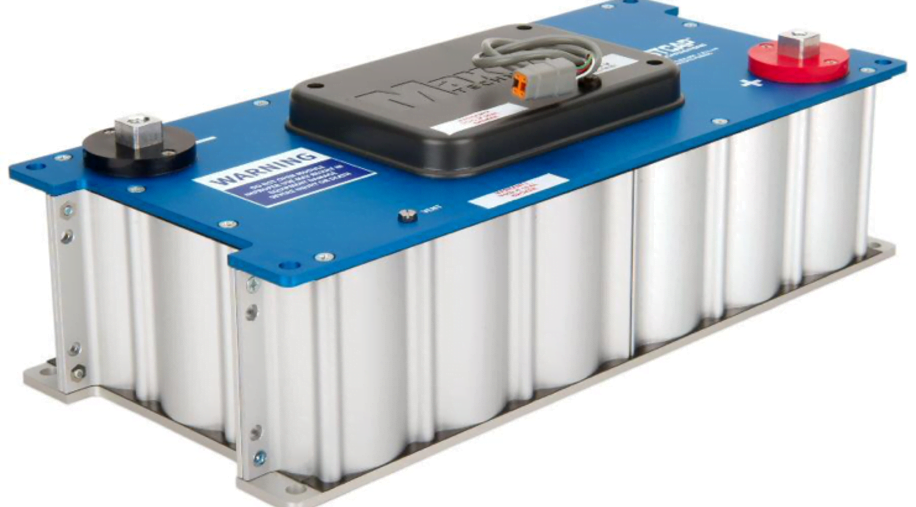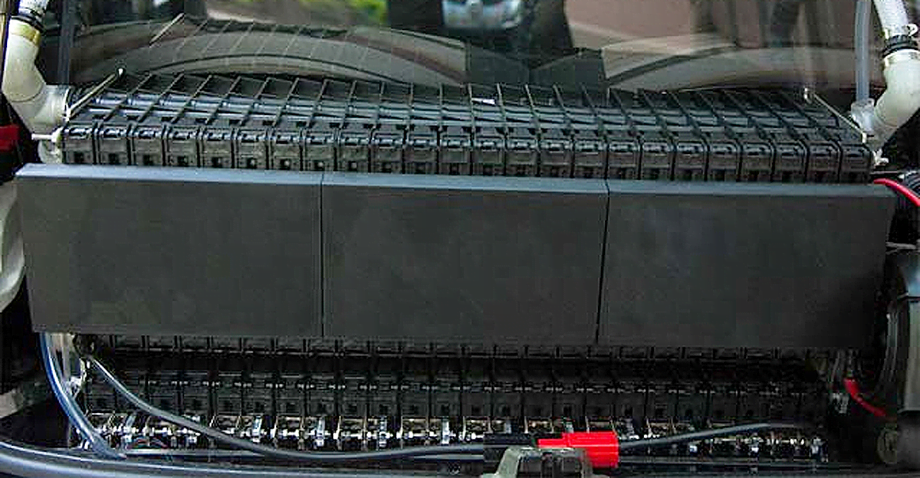Electric vehicle batteries
Electric vehicles were commonly used from 1880 or so. Their increased use was limited by inefficent electric vehicle batteries. This also limited speed to only 35 km/h (22 mph). Their range was about 100 km (62 mph). It also awaited adequate control technology. (See also Electric Vehicle History)

Pic: Edison Battery Archives
From 1970 onward, technology improved dramatically. AGM batteries increased driving range slightly. Otherwise, electric vehicle batteries remained almost unchanged. Most provided about 33 watt-hours per kilogram.
Nickel Hydride
In 1991, the USA launched its Advanced Battery Consortium. This resulted in the nickel hydride (NiMH) battery. This initially doubled energy – to 68 Wh/kg. That has since doubled.

Early nickel hydride (NiMH) battery. Pic: ecomento.com
While having greater energy density, NiMH’s have low charging efficiency. Moreover, they are costly. Furthermore, they tend to self-discharge. There is also hydrogen loss. Nevertheless, they still power hybrid vehicles. Honda and Toyota use them.
Lithium
In 1996, Texas University conceived lithium batteries. They now store 140 Wh/kg. This is more energy than NiMH otherwise equivalents. Their charging rate is far higher. Furthermore, they can release huge energy.
As of 2020, these batteries provide 250-450 km. This is just adequate for commuter driving. Lithium batteries can be recharged overnight. This is feasible from solar or grid power. See Solar Charging Your Electric Car.
Lithium batteries have high energy density. They are, however, costly to make. It is far from emission-free.
Graphene
Graphene is a break-through product. At one atom thick, it is virtually two-dimensional. The height of three million layers is 1.0 mm. Each layer consists of hexagonal honeycomb-like rings. Atoms strongly co-bond within the rings.
Graphene is ultra-strong. It has neglible electrical resistance. Furthermore, it conducts heat superbly. Graphene enables lithium batteries to increase capacity per kg. It’s high conductivity enables electric vehicle batteries to charge faster. Graphene also increases their usable working life. Moreover, that of batteries generally. These batteries are not yet on sale. Research and development, however, is intensive.

A graphene lattice is one atom thick. Pic: Original source unknown
Ultracapacitors

An ultracapacitor. Pic: Maxwell Technologies
Alternative battery technologies
Piëch Automotive may have a possible breakthrough. It’s electric car has an all-new battery. It is claimed to 80% recharge in under five minutes. The company claims ‘significantly higher currents can flow as the cell temperature rises only marginally’. Furthermore, fast charging ‘reaches 80% in under five minutes’. Also claimed is reduced heat build-up enables battery cooling by air alone. Furthermore that ‘such cooling saves weight’.
The vehicle has three electric motors. One front-axle asynchronous motor delivers 150 kW. Two rear-axle synchronous motors produce 150 kW each. Its range is claimed to be 500 km (about 310 miles).
Electric vehicle battery life
Sudden battery failure is now rare. Because of this, most battery makers quote ‘usable recommended lifespan’. It is now of the charge/discharge cycles before original capacity fall to 80%. The battery may remain usable, but 20% capacity is lost.
Most electric car makers guarantee batteries for eight years. Nissan’s guarantee is against defects for eight years or 160,000 km (100,000 miles). Also, against capacity loss for 5 years or 96,500 km (603,000 miles).
Aluminium batteries
Aluminium has electrical potential. Phinergy (plus Alcoa) have developed a non-rechargeable alumiumium-based battery. It releases electricity in a process that, in effect, is the reverse of aluminium smelting.
The Phinergy Al-air battery uses air as the cathode. Being aluminum, the Al-air battery is lighter than a comparable lithium battery. Each Al-air ‘battery’ is claimed to extract 8.1 kilowatt-hours of energy. Of this, 50% is electricity and 50% heat per kg of aluminium. Fully depleted batteries are replaced. Each should enable over 1500 km (about 935 miles) for typical electric passenger vehicles. Far from all fuel stations may initially stock these batterries. A spare one is thus needed
Phinergy is associated with the Indian Oil Corporation and Ashok Leyland. Its concept is interesting, but will need global service for ongoing replacements.

The Phinergy ‘battery’. Pic: Phinergy
The aluminum-air battery market is likely to grow. The batteries are claimed cost-effective, recyclable and safe. If so proven, aluminum-air batteries may power electric and hybrid vehicles.
Summary
The market for quickly-rechargeable, light and compact batteries is huge. One or another battery will eventually evolve. When it does, electric-only vehicles are likely to have a range unthinkable using fossil-fuels. Moreover, in the meantime, hybrids are an excellent compromise. Furthermore, see also Electric Vehicles – Hybrids.
The Electric Vehicle Series
This is a part of a series of articles about the history and technology involved in electric vehicles.


